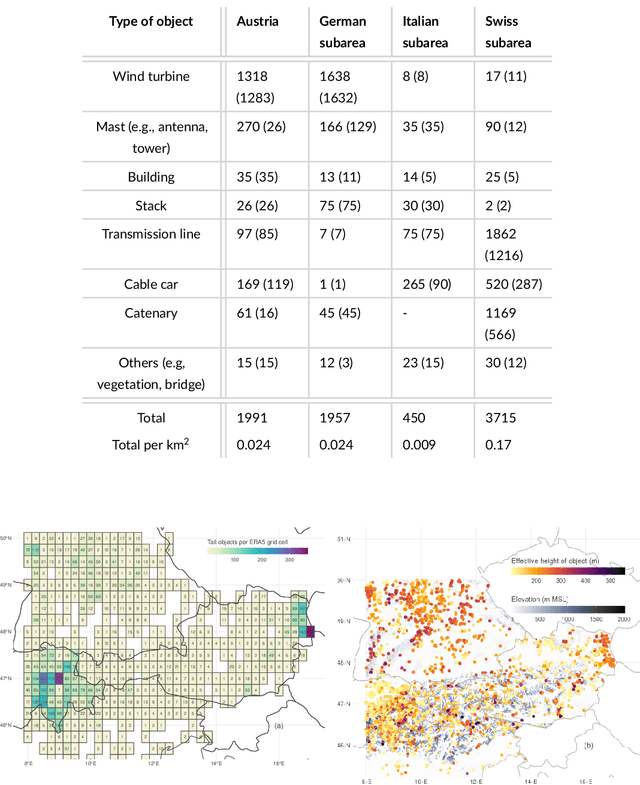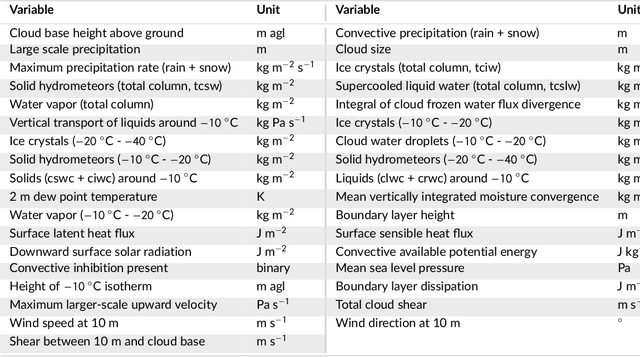Georg J. Mayr
Long-term foehn reconstruction combining unsupervised and supervised learning
Jun 03, 2024Abstract:Foehn winds, characterized by abrupt temperature increases and wind speed changes, significantly impact regions on the leeward side of mountain ranges, e.g., by spreading wildfires. Understanding how foehn occurrences change under climate change is crucial. Unfortunately, foehn cannot be measured directly but has to be inferred from meteorological measurements employing suitable classification schemes. Hence, this approach is typically limited to specific periods for which the necessary data are available. We present a novel approach for reconstructing historical foehn occurrences using a combination of unsupervised and supervised probabilistic statistical learning methods. We utilize in-situ measurements (available for recent decades) to train an unsupervised learner (finite mixture model) for automatic foehn classification. These labeled data are then linked to reanalysis data (covering longer periods) using a supervised learner (lasso or boosting). This allows to reconstruct past foehn probabilities based solely on reanalysis data. Applying this method to ERA5 reanalysis data for six stations across Switzerland and Austria achieves accurate hourly reconstructions of north and south foehn occurrence, respectively, dating back to 1940. This paves the way for investigating how seasonal foehn patterns have evolved over the past 83 years, providing valuable insights into climate change impacts on these critical wind events.
Spatio-seasonal risk assessment of upward lightning at tall objects using meteorological reanalysis data
Mar 18, 2024

Abstract:This study investigates lightning at tall objects and evaluates the risk of upward lightning (UL) over the eastern Alps and its surrounding areas. While uncommon, UL poses a threat, especially to wind turbines, as the long-duration current of UL can cause significant damage. Current risk assessment methods overlook the impact of meteorological conditions, potentially underestimating UL risks. Therefore, this study employs random forests, a machine learning technique, to analyze the relationship between UL measured at Gaisberg Tower (Austria) and $35$ larger-scale meteorological variables. Of these, the larger-scale upward velocity, wind speed and direction at 10 meters and cloud physics variables contribute most information. The random forests predict the risk of UL across the study area at a 1 km$^2$ resolution. Strong near-surface winds combined with upward deflection by elevated terrain increase UL risk. The diurnal cycle of the UL risk as well as high-risk areas shift seasonally. They are concentrated north/northeast of the Alps in winter due to prevailing northerly winds, and expanding southward, impacting northern Italy in the transitional and summer months. The model performs best in winter, with the highest predicted UL risk coinciding with observed peaks in measured lightning at tall objects. The highest concentration is north of the Alps, where most wind turbines are located, leading to an increase in overall lightning activity. Comprehensive meteorological information is essential for UL risk assessment, as lightning densities are a poor indicator of lightning at tall objects.
Upward lightning at wind turbines: Risk assessment from larger-scale meteorology
Jan 09, 2023Abstract:Upward lightning (UL) has become an increasingly important threat to wind turbines as ever more of them are being installed for renewably producing electricity. The taller the wind turbine the higher the risk that the type of lightning striking the man-made structure is UL. UL can be much more destructive than downward lightning due to its long lasting initial continuous current leading to a large charge transfer within the lightning discharge process. Current standards for the risk assessment of lightning at wind turbines mainly take the summer lightning activity into account, which is inferred from LLS. Ground truth lightning current measurements reveal that less than 50% of UL might be detected by lightning location systems (LLS). This leads to a large underestimation of the proportion of LLS-non-detectable UL at wind turbines, which is the dominant lightning type in the cold season. This study aims to assess the risk of LLS-detectable and LLS-non-detectable UL at wind turbines using direct UL measurements at the Gaisberg Tower (Austria) and S\"antis Tower (Switzerland). Direct UL observations are linked to meteorological reanalysis data and joined by random forests, a powerful machine learning technique. The meteorological drivers for the non-/occurrence of LLS-detectable and LLS-non-detectable UL, respectively, are found from the random forest models trained at the towers and have large predictive skill on independent data. In a second step the results from the tower-trained models are extended to a larger study domain (Central and Northern Germany). The tower-trained models for LLS-detectable lightning is independently verified at wind turbine locations in that domain and found to reliably diagnose that type of UL. Risk maps based on case study events show that high diagnosed probabilities in the study domain coincide with actual UL events.
 Add to Chrome
Add to Chrome Add to Firefox
Add to Firefox Add to Edge
Add to Edge